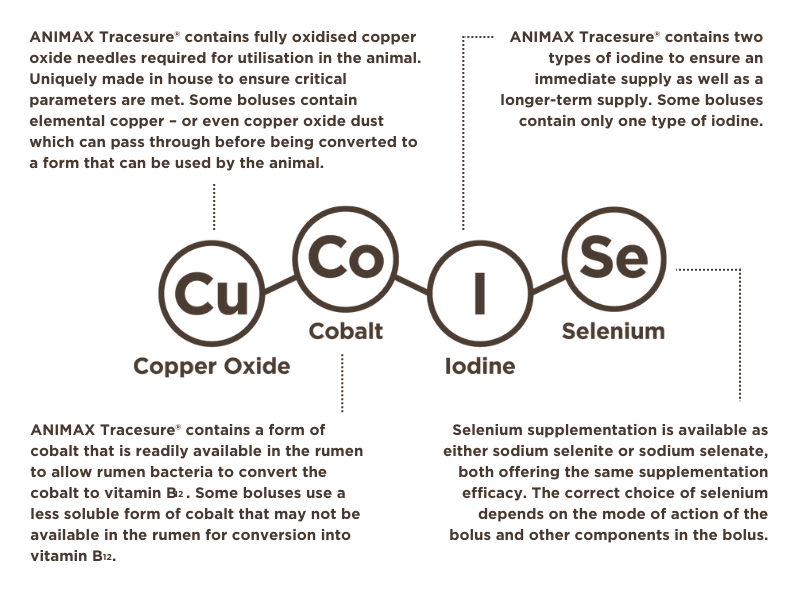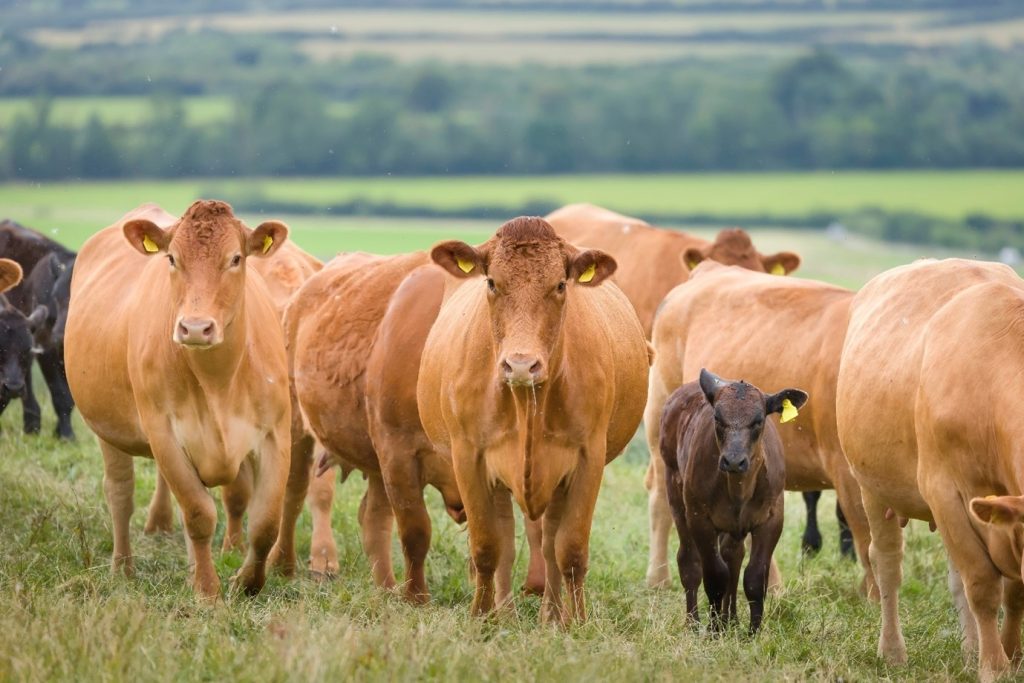As spring-calving suckler cows gear up for breeding, now is our last chance to get things optimised for next year’s calving and progeny, starting with a cattle bolus.
The perfect cow will have a trouble-free pregnancy, will calve with minimal assistance, and will go on to rear a strong calf.
Cows that don’t get back in calf every 365 days are effectively losing revenue potential. The losses are numerous:
- the loss of days for the next calf to grow
- the cost of feeding an empty cow
- the extra labour involved with managing an extended calving period.
Despite a recent dip in deadweight beef prices as we write this in early July 2024, beef prices remain high compared to the last few years. With market analysts reckoning these prices are here to stay for the foreseeable, we’ve got 5 pointers for getting cows back in calf. The result? A compact calving pattern and maximising the next year’s crop of calves from the pre-breeding phase.
POINTER 1: CONDITION SUCKLER COWS OVER TIME
Suckler cows must be fit but not fat or thin. Monitor body condition score (BCS) early and regularly to hit a BCS of 3-3.5. Group and adjust nutrition accordingly, so that low BCS suckler cows are given preferential grazing and supplementary feeding where needed.
Don’t try and do this overnight – changes need to be gradual and cannot be achieved quickly.
POINTER 2: REMEMBER TO TEND TO THE BULL!
Hitting an optimal body condition also applies to bulls! Bulls should have a BCS of 5.5 to 6.5 heading into the breeding season. Higher than a suckler cow because a bull may lose 100 to 200 pounds during the breeding season. But do ensure the bull isn’t overly fat, indicated by fat deposits in the neck of the scrotum tight to the body wall.
Undertake health and semen checks on your herd bull. Pay attention also to feet health and mobility. Work closely with a reputable AI technician (if using one) and have a regular maintenance schedule for your semen tank.
POINTER 3: SELECT HEIFERS RIPE FOR BREEDING
The goal is to get heifers in-calf to time with the rest of the herd; for maintaining pregnancy and ease of calving. So, it is important you include them in your conditioning programme early.
Try only to breed from replacement heifers that are born from suckler cows that calf themselves without assistance. Complete a pre-breeding check of heifers, assessing that they are 60% of their mature bodyweight. Take pelvic measurements, removing heifers with small pelvises before bulling.
POINTER 4: CONTROL ANY INFECTIOUS DISEASES
Consult with your vet to construct a rigorous health plan which should include a vaccination policy. Refer to CHECS – an industry recognised scheme – for measures on disease control, measures on introducing new stock to the farm, biosecurity, and so on.
POINTER 5: ESTABLISH YOUR TRACE ELEMENT STATUS
Consult your vet and work out a plan for trace element supplementation. If your suckler cows are deficient in any of the essential trace elements, fertility and the ability to build body condition can be severely impacted. Remember to include the bulls in this.
Trace element supplementation in suckler cows
Almost all soil – and therefore grass and forage – is deficient in one or more trace elements – cobalt, copper, iodine, and selenium. Cattle are also often exposed to trace element antagonists – such as iron, manganese, sulphur, and molybdenum – that compromise trace element uptake.
Having a supply of enough of the required essential trace elements is a fundamental for normal heat and conception, and therefore essential for a successful breeding season.
Where a deficiency is tested for, suckler cows should be supplemented with trace elements at least 6-8 weeks before breeding. This will ensure they have the reproductive system in good working order ready for breeding.
Choosing the mode of supplementation will come down to practicalities and precision.
As boluses can be given in one hit and can offer an assured supply without the need to supplementary feed, it’s a popular form of supplementation that farmers can really count on.
5 factors to consider when selecting your suckler cattle bolus
- What trace elements are required at what levels
- The actual trace element levels supplied per day
- How well the trace elements can be absorbed
- The risk of the bolus passing prematurely
- Whether claims are supported by credible research
ANIMAX Tracesure® features patented diffusion technology® to ensure the bolus retains its size and weight over time. This results in superior ruminal retention and low risk of premature passing during the 6 months of cover. ANIMAX Tracesure® also offers forms of trace elements selected for their efficacy:

Available in two different sizes, only one bolus application is required per suckler cow, making life that little bit easier.
- ANIMAX Tracesure® Cattle is designed for heifers and smaller suckler cows weighing-in at under 500kg.
- ANIMAX Tracesure® Cattle XL is designed for larger mature suckler cows weighing-in over 500kg.
A cattle bolus that is approved for organic suckler cows
ANIMAX Tracesure® (no-copper) boluses are approved by the Soil Association (UK) and Irish Organic Association (Ireland) for use on organic systems. ANIMAX Copasure® medicinal copper capsules can be offered alongside the cobalt, iodine and selenium bolus, under derogation.
How to get your cattle bolus
Find your local stockist or speak to your local ANIMAX specialist


